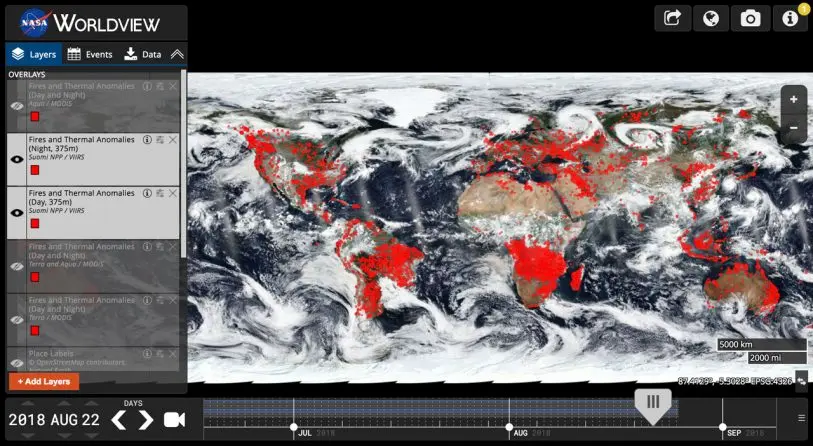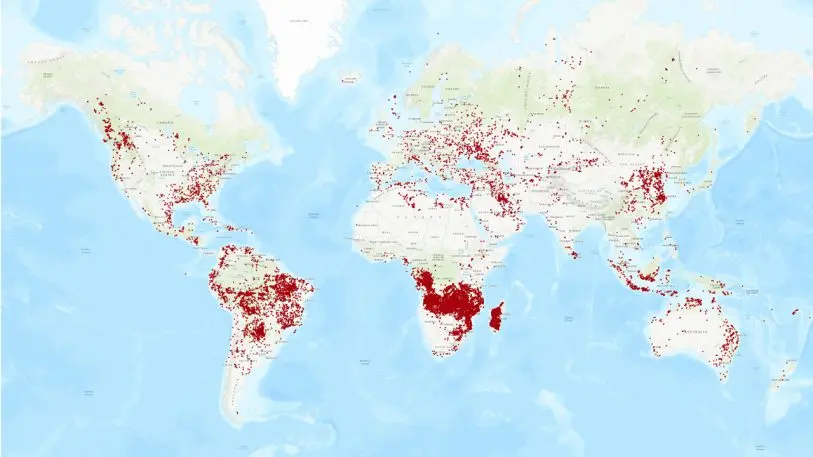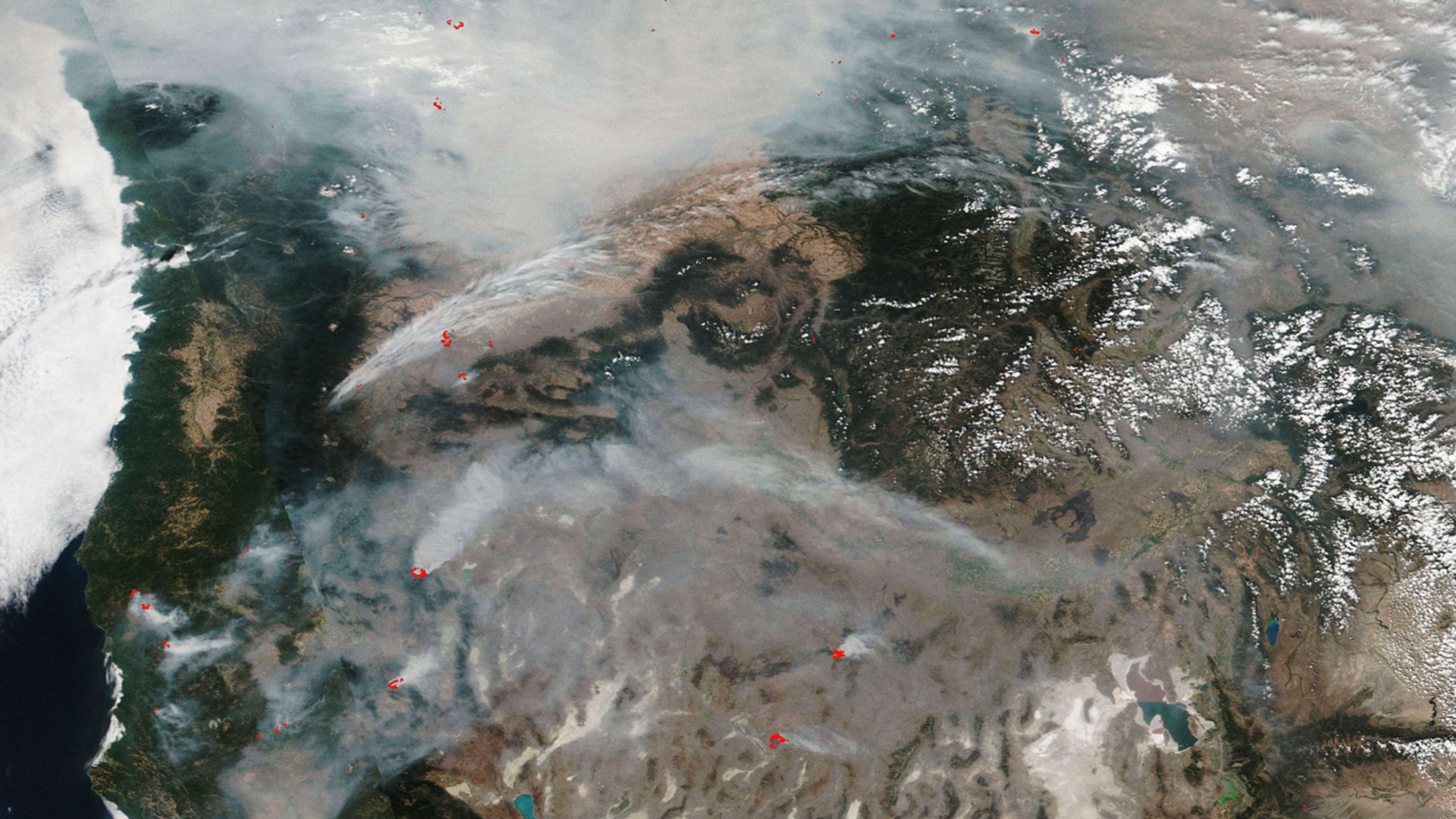As dozens of wildfires burn in British Columbia and the Cascades, breathing the air in Seattle this week is the equivalent of smoking at least seven cigarettes a day. In California, the Mendocino Fire complex has burned more than 400,000 acres so far, or more than half the size of Rhode Island. In Australia, where it is currently winter, bushfire season started a month earlier than usual. Earlier this summer, major fires started north of the Arctic Circle in Sweden.

A new satellite image from NASA shows fires burning across the globe. In some areas, including parts of Africa, the fires are agricultural. In other areas, they’re wildfires, fueled by extreme heatwaves and droughts linked to climate change.

As fires increase, so do the damages. Earlier this month, thousands of people in Spain were evacuated when 11 new fires erupted within six hours. In July, 96 people died when a fire suddenly hit a Greek vacation town (some died by drowning after attempting to flee into the Aegean Sea.) Fires hit areas that are normally wetter, like England, where rainfall was 3% of the normal amount in June. In Sweden, wildfires spread during the worst drought in 74 years. Forest fires are currently forcing evacuations near Berlin. In early August, when temperatures in Glacier National Park hit 100 degrees–the hottest day in recorded history–lightning ignited fires that rapidly spread. In 2017, large wildfires also burned in Greenland for the first time in history.
This is the new normal. In California, where five of the 10 largest fires in the state’s history have happened in the last five years, insurance companies are beginning to drop coverage of homeowners in areas at risk (insurance claims from the fires in 2017 added up to more than $9 billion). In the Western U.S., large forest fires are occurring nearly five times more often than in the mid-20th century, and wildfire season has gotten longer. In two decades, the average wildfire size could be six times larger.
Recognize your brand’s excellence by applying to this year’s Brands That Matter Awards before the early-rate deadline, May 3.
